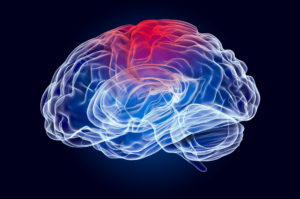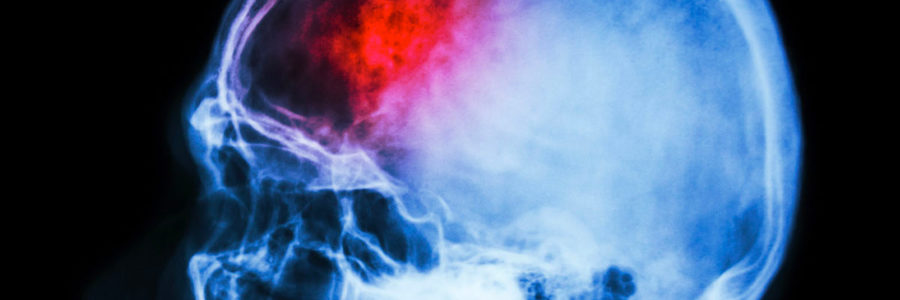Brain Inflammation: In our increasingly toxic world, the symptoms of brain inflammation are on the rise. Living with these symptoms has become so normalized that many people don’t even realize that there is a way out of their suffering. Addressing brain inflammation requires a multi-therapeutic approach that addresses both lifestyles as well as safe and effective detox. Today we explore the tools that may help you get your life back by reducing brain inflammation and increasing your mental well-being.

This article has been medically reviewed by Dr. Charles Penick, MD
What is Inflammation?
Inflammation occurs in the body as a response to infection, injury, disease, or stress.1
Although inflammation gets a bad rep in the health and wellness industry, it serves a purpose in the short term. In fact, many ailments would not be able to heal without the presence of inflammation. [1]
The two types of inflammation include:
- Acute inflammation: short term inflammation (generally less than two weeks) can help the body heal from an injury or illness. It does so in a few different ways, including releasing inflammatory mediators like hormones bradykinin and histamine. These substances cause the small blood vessels in the tissue to dilate (become wider), which allows for more blood to reach the injured tissue. Increased blood flow means more immune cells to the injury site, which promotes the healing process. [1]
- Chronic inflammation: long term, persistent inflammation is generally problematic. It can be the cause of chronic exposure to things that cause an inflammatory response (like consuming too many refined sugars or chronic mental stress), or it can be the result of the immune system fighting against the body’s own cells by mistake, causing harmful inflammations (this is known as an autoimmune disease). [2]
Acute inflammation plays a role in supporting the body as a reaction that enables healing. Although chronic inflammation is also a response, it is not one that we should indulge in and signals a problem that needs to be addressed generally with a lifestyle change.
Signs of Brain Inflammation

General signs of inflammation include redness, heat, swelling, pain, and loss of function. [1] But not all inflammation causes symptoms. “Silent” inflammation can wreak havoc on your health without any typically presenting symptoms of inflammation itself. [1]
Inflammation in the brain, also known as brain swelling or cerebral edema, is a serious situation because the brain plays such a crucial role in controlling the body’s operating system. Swelling can occur in various locations throughout the brain, which causes pressure and ultimately a loss of blood flow to the brain. [3]
It can also lead to a blockage of other fluids from leaving the brain, which can lead to brain damage and even death. Although death is a less common occurrence, brain inflammation symptoms are so common that many people just assume it’s a natural part of aging or a part of their personality.
Symptoms wise, brain inflammation, can show up as: [4]
- Exhaustion
- Generally feeling ill
- Fever
- Brain fog
- Forgetfulness
- Memory loss
- Headache
- Neck pain or stiffness
- Dizziness
- Vision loss or changes
- Inability to walk
Many of these symptoms are things that people live with for their entire lifetime, just assuming it is a part of “how they are.” Many people have been silently suffering their whole life, not knowing that there is a way out of their pain.
How to Lower Brain Inflammation
Addressing brain inflammation requires a multifaceted approach and a little patience. The toxins that accumulate in the body over the years end up nestling in the brain as a way to protect the rest of the body so that toxins are not free-flowing in the blood. [5]
Understanding that lowering brain inflammation will require lifestyle changes and some time (often years) can be daunting. Still, people often experience a dramatic shift into higher states of health and mental wellbeing reasonably quickly.
Although benefits of these lifestyle changes are generally experienced soon after embarking on them, it is essential to stick with these changes and cycle in and out of proper detox protocols for a long time. Making these changes for life will help ensure that you continue to support your brain and body so that true, deep cellular healing can occur.
To embark on the journey towards greater brain health and increased mental wellness, the essential foundations include: stopping further exposure to toxins, managing stress, exercising, getting quality sleep, diet variation, fasting, and proper brain detox.
Brain Inflammation: Stop Further Exposure to Toxins
Before focusing on getting the current toxins out, it’s essential to make sure you are no longer introducing new toxins into your body and brain. Stopping exposure to new toxins requires being aware of toxins’ sources that you are currently exposing yourself to; this can be difficult in the ‘modern world’ because they are everywhere. Some sources to consider include:
- Amalgam fillings
- Mold exposure
- Cosmetics and body care products
- Home cleaning products
- Paints, glues, and other craft/ building/ repair materials
- New car, furniture, appliances, and carpets (that off-gas fumes known as volatile organic compounds or VOCs, often for years after being built or installed)
- Tap water
- Pesticides and herbicides found in conventionally grown food
- Hormones and antibiotics found in conventionally raised animal products
- Herbicides and pesticides found in public parks and lawns
- Electromagnetic frequencies and ‘dirty electricity’ are found predominantly in big cities and around ‘smart’ devices (like phones, tablets, and TVs) or in the presence of WIFI.
Brain Inflammation: Manage Stress

Stress management is a crucial aspect of inflammation management and health in general because stress, perceived or real, can cause an inflammatory response in the body. Chronic inflammation resulting from mental stress has been linked to a wide range of illnesses, including atherosclerosis, non-alcoholic fatty liver disease (NAFLD), and depression. [6]
Stress management looks different for every person, and some people handle stress better than others. Some tools to reduce stress include mindfulness practices like yoga and meditation, stretching, time in nature, and gentle walks. [7]
Sleep, Exercise, and the Glymphatic System

Built into the brain is a system called the glymphatic system. This glymphatic system relies on cerebrospinal fluid (CSF) and interstitial fluid, which essentially detox’s the brain by collecting waste while you sleep. [8] “Waste” includes a protein called beta-amyloid plaque, which may be associated with neurodegenerative diseases like Alzheimer’s as well as toxicity in the brain.
This waste is shuttled out of your brain into your body, where it can then be excreted. This removal is effective when paired with proper brain detoxification.
Quality sleep is one of the best ways to promote brain detoxification because there is a large increase of activity between these cerebrospinal and interstitial fluids during deep sleep. Exercise also promotes a boost in these two fluids, to a lesser degree. [9]
Detox Your Brain

Although the brain naturally detoxifies itself thanks to the glymphatic system, it can only go so far by itself. Impairment to ridding these toxins from the brain and body include the abnormally high exposure to toxins (more than the body can deal with), as well as blocked detox pathways. [10] Therefore, a proper brain detox will address the entire detox pathway, all the way back to the root of cellular toxicity, and include true binders that enable toxins to safely and effectively exit the body.
Often, detoxes sold on the shelves of pharmacies or online do not provide the full support needed to safely or effectively detox. The harm can be incredible if done improperly, and at best, can be a waste of money.
Suppose the detox protocol fails to open up and support the detox pathways. In that case, likely, the toxins will not make their way out of the body, either staying lodged in their ‘hiding place’ (like the brain) or could dump into the body and free-flow in the blood, redistributing in other areas of the body and making you feel worse than before.
True binders are key to safe and effective detox because they cling to toxins until they exit the body, ushering them out. This helps the ‘street sweeper’ effect that most weak binders have (like chlorella or cilantro), simply redepositing the toxins elsewhere in your body.
TrueCarbonCleanse® formula contains highly specialized, highly activated carbon, powerful humates (humic and fulvic acids), CleanoptiliteTM (Clinoptilolite – Zeolite Crystals), and other gut detoxifiers. No other formula has ever achieved this level of effectiveness.
TrueCarbonCleanse supports your body’s natural removal of pro-inflammatory and body-impacting toxins we are exposed to from the air, water, plastics, heavy metals, chemicals, and more OUT of your cells and body. TrueCarbonCleanse serves as a master drainage gut detoxifying formula that attracts toxins released in the colon and prevents them from reabsorbing back into the body, aka RETOXIFICATION! The proprietary matrix of powerful and diverse binders ATTACH to the toxins so they can’t be reabsorbed back into the body, causing the “retox effect”…
… instead, they are gently escorted out of the body permanently so the body can thrive naturally without this toxic interference.
Besides the ultra-pure and potent activated charcoal that absorbs up to 300 times its weight in toxins, the specialized, powerful humates (humic and fulvic acids) – are for additional detox and remineralization support.
Brain Inflammation: Fasting

shot of religious words
Fasting is another aspect of diet that can lead to a profound reduction in inflammation. [11] There are many ways to incorporate fasting into your life:
- A single-day (24-hour) fast can be implemented as a part of diet variation principles.
- 5-day water fast can be used a few times a year to hit ‘reset’ on the immune system and dramatically improve insulin sensitivity and autophagy [12]
- Intermittent fasting can be used daily to improve insulin sensitivity and promote autophagy and cellular healing. Simply restrict the feeding window to less than 12 hours daily, ideally limiting food intake to about a 6-hour restricted window. [13]
The idea of lowering brain inflammation may seem daunting.
But you don’t need a team of experts or expensive therapies to start detoxing your brain and lowering inflammation TODAY. True Cellular Formulas BrainDTX offers a clinical dose of alpha lipoic acid (ALA), plus cofactors like biotin and 400 mg of ginkgo biloba. ALA isn’t just essential for many metabolic, mitochondrial, and neurological pathways —it also helps synthesize glutathione and can detox heavy metals from the brain.
Start a safe and gentle brain detox ASAP with your daily dose of BrainDTX, and start to feel the difference in clarity and energy as inflammation plummets.
Medical Disclaimer: This article is based on the opinions of The Cell Health team. The information on this website is not intended to replace a one-on-one relationship with a qualified healthcare professional and is not intended as medical advice. It is intended to share knowledge and information from the research and experience of the Cell Health team. This article has been medically reviewed by Dr. Charles Penick, MD, for the accuracy of the information provided. Still, we encourage you to make your own healthcare decisions based on your research and in partnership with a qualified healthcare professional.
Summary
Brain detoxification can help people regain mental well-being and greater health and vitality. Since many people have become so used to brain inflammation symptoms, it is common for people to assume it is a part of their personality or a natural part of aging. Addressing symptoms like brain fog, headaches, forgetfulness, and exhaustion can be done using a multi-therapeutic approach and lifestyle change.
This process involved stopping further exposure to toxins, managing stress, getting adequate sleep and exercise, proper brain detox, and diet variation and fasting methods.
References
- InformedHealth.org. “What Is an Inflammation?” Institute for Quality and Efficiency in Health Care (IQWiG), 23 Nov. 2010, www.ncbi.nlm.nih.gov/books/NBK279298/.
- Liu, Yun-Zi et al. “Inflammation: The Common Pathway of Stress-Related Diseases.” Frontiers in human neuroscience vol. 11 316. 20 Jun. 2017, doi:10.3389/fnhum.2017.00316
- Dantzer, Robert, et al. “From Inflammation to Sickness and Depression: When the Immune System Subjugates the Brain.” Nature Reviews Neuroscience, vol. 9, no. 1, 2008, pp. 46–56., doi:10.1038/nrn2297.
- “Do You Have Brain Inflammation? How to Know and What to Do.” The Functional Neurology Center, 20 Jan. 2021, thefnc.com/research/do-you-have-brain-inflammation/.
- “Neurotoxicity.” U.S. National Library of Medicine, National Institutes of Health, toxtutor.nlm.nih.gov/14-004.html.
- Liu, Yun-Zi et al. “Inflammation: The Common Pathway of Stress-Related Diseases.” Frontiers in human neuroscience vol. 11 316. 20 Jun. 2017, doi:10.3389/fnhum.2017.00316
- Chiesa, A, and A Serretti. “Mindfulness-Based Stress Reduction for Stress Management in Healthy People: a Review and Meta-Analysis. .” Database of Abstracts of Reviews of Effects (DARE), 2009, www.ncbi.nlm.nih.gov/books/NBK77489/.
- Munk, Anne Sofie, et al. “Understanding the Glymphatic System.” Neuronline, neuronline.sfn.org/scientific-research/understanding-the-glymphatic-system.
- von Holstein-Rathlou, Stephanie et al. “Voluntary running enhances glymphatic influx in awake behaving, young mice.” Neuroscience letters vol. 662 (2018): 253-258. doi:10.1016/j.neulet.2017.10.035
- Hefele, Peter. “DETOXIFICATION: STRATEGIES FOR WELLNESS AND LONGEVITY.” Douglas Laboratories, 2002, pp. 1–12., www.oakwayhealthcenter.com/store/DL_Detoxification.pdf.
- Jordan, Stefan, et al. “Dietary Intake Regulates the Circulating Inflammatory Monocyte Pool.” Cell, vol. 178, no. 5, 2019, doi:10.1016/j.cell.2019.07.050.
- Cheng, Chia-Wei, et al. “Prolonged Fasting Reduces IGF-1/PKA to Promote Hematopoietic-Stem-Cell-Based Regeneration and Reverse Immunosuppression.” Cell Stem Cell, vol. 14, no. 6, 2014, pp. 810–823., doi:10.1016/j.stem.2014.04.014.
- Mindikoglu, Ayse L., et al. “Intermittent Fasting from Dawn to Sunset for 30 Consecutive Days Is Associated with Anticancer Proteomic Signature and Upregulates Key Regulatory Proteins of Glucose and Lipid Metabolism, Circadian Clock, DNA Repair, Cytoskeleton Remodeling, Immune System and Cognitive Function in Healthy Subjects.” Journal of Proteomics, vol. 217, 2020, p. 103645., doi:10.1016/j.jprot.2020.103645.


